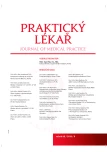Health risks of phytotoxins in "mad" honey
Authors:
K. Kromerová 1,2; V. Bencko 1
Authors‘ workplace:
Univerzita Karlova v Praze Ústav hygieny a epidemiologie 1. LF a VFN, Praha Prednosta: prof. MUDr. Milan Tuček, CSc.
1; Úrad verejného zdravotníctva Slovenskej republiky, Bratislava Riaditeľ: Mgr. RNDr. MUDr. Ján Mikas, PhD.
2
Published in:
Prakt. Lék. 2019; 99(6): 258-261
Category:
Of different specialties
Overview
There is a lot of information about the nutritional and medicinal properties of honey. However, honey may contain compounds that can lead to toxicity. Phytotoxins are secondary plant metabolites that show acute or chronic toxicity or have anti-nutritional effects. Bees feeding on the flowers of toxic plants can result in contamination of honey. An example is honey obtained from the nectar of the Rhododendron family plants containing grayanotoxins (GTX), called "mad" or "bitter" honey. Physicians should think about the possibility of consuming "mad honey" in cases of sudden unexplained hypotension and bradyarrhythmia in previously healthy patients.
Sources
1. Bencko V, Myrvold EH, Šíma P. Med a zdraví. Prakt. Lék. 2017; 97(4): 195–197.
2. Islam MN, Khalil MI, Islam MA, Gan SH. Toxic compounds in honey. J Appl Toxicol 2014; 34: 733–742.
3. Mol HG, van Dam RC, Zomer P, Mulder PP. Screening of plant toxins in food, feed and botanicals using full-scan high-resolution (Orbitrap) mass spectrometry. Food Addit Contam Part A Chem Anal Control Expo Risk Assess 2011; 28: 1405–1423.
4. Bilir O, Ersunan G, Yavasi O, et al. How much should we observe patients with mad honey poisoning? Biomed Res 2017; 28(4): 1528–1532.
5. These A, Bodi D, Uecker S, et al. A case of human poisoning by grayanotoxins following honey ingestion: elucidation of the toxin profile by mass spectrometry. Food Addit Contam Part A Chem Anal Control Expo Risk Assess 2015; 32(10): 1674–1684.
6. Sahin H, Turumtay EA, Yildiz O, Kolayli S. Grayanotoxin-III detection and antioxidant activity of mad honey. Int J Food Prop 2015; 18: 2665–2674.
7. Silici S, Atayoglu AT. Mad honey intoxication: A systematic review on the 1199 cases. Food Chem Toxicol 2015; 86: 282–290.
8. Jansen SA, Kleerekooper I, Hofman ZL, et al. Grayanotoxin poisoning: “mad honey disease” and beyond. Cardiovasc Toxicol 2012; 12: 208–215.
9. Harissis HV, Mavrofridis G. “Mad honey” in medicine from antiquity to the present day. Arch Hellen Med 2013; 30(6): 730–733.
10. Dogan FS, Ozaydin V, Incealtin O, et al. A case of acute hepatitis following mad honey ingestion. Turk J Emerg Med 2015; 15: 185–186.
11. Broscaru L, Dobre C, Rösick F, et al. Mad honey disease. EJCRIM 2017; 4. doi:10.12890/2017_000742
12. Ullah S, Khan SU, Saleh TA, Fahad S. Mad honey: uses, intoxicating/poisoning effects, diagnosis, and treatment. RSC Adv 2018; 8(33): 18635–18646.
13. Okuyan E, Uslu A, Levent MO. Cardiac effects of “mad honey”: a case series. Clin Toxicol (Phila) 2010; 48: 528–532.
14. Aygun A, Sahin A, Karaca Y, et al. Grayanotoxin levels in blood, urine and honey and their association with clinical status in patients with mad honey intoxication. Turk J Emerg Med 2018; 18: 29–33.
15. Bundesinstitut für Risikobewertung (BfR). Cases of poisoning through grayanotoxins in rhododendron honey originating from the Turkish Black Sea Region. BfR Opinion Nr. 043/2010 [online]. Dostupné z: http://www.bfr.bund.de/cm/349/cases_of_poisoning_through_grayanotoxins_in_rhododendron_honey_originating_from_the_turkish_black_sea_region.pdf [cit. 2019-09-29].
16. Alsancak Y, Ali S, Duran M, et al. A rare case of Kounis syndrome provoked by mad honey poisoning. IJCA 2016; 2: 103–105.
17. Erenler AK. Cardiac effects of mad honey poisoning and its management in emergency department: a review from Turkey. Cardiovasc Toxicol 2016; 16: 1–4.
18. Choi HL, Park KH, Park JS, et al. Relationship between blood toxin level and clinical features in patients with grayanotoxin poisoning – six clinical cases. Clin Toxicol 2017; 55(9): 991–995.
Labels
General practitioner for children and adolescents General practitioner for adultsArticle was published in
General Practitioner

2019 Issue 6
- Memantine Eases Daily Life for Patients and Caregivers
- Metamizole vs. Tramadol in Postoperative Analgesia
- Metamizole at a Glance and in Practice – Effective Non-Opioid Analgesic for All Ages
- Memantine in Dementia Therapy – Current Findings and Possible Future Applications
- What Effect Can Be Expected from Limosilactobacillus reuteri in Mucositis and Peri-Implantitis?
Most read in this issue
- Diagnostics and treatment of patients with visceral ischaemia
- Konsenzus používání antibiotik: fluorochinolony*
- Screening methods for the detection of obstructive sleep apnoea syndrome
- Health risks of phytotoxins in "mad" honey
